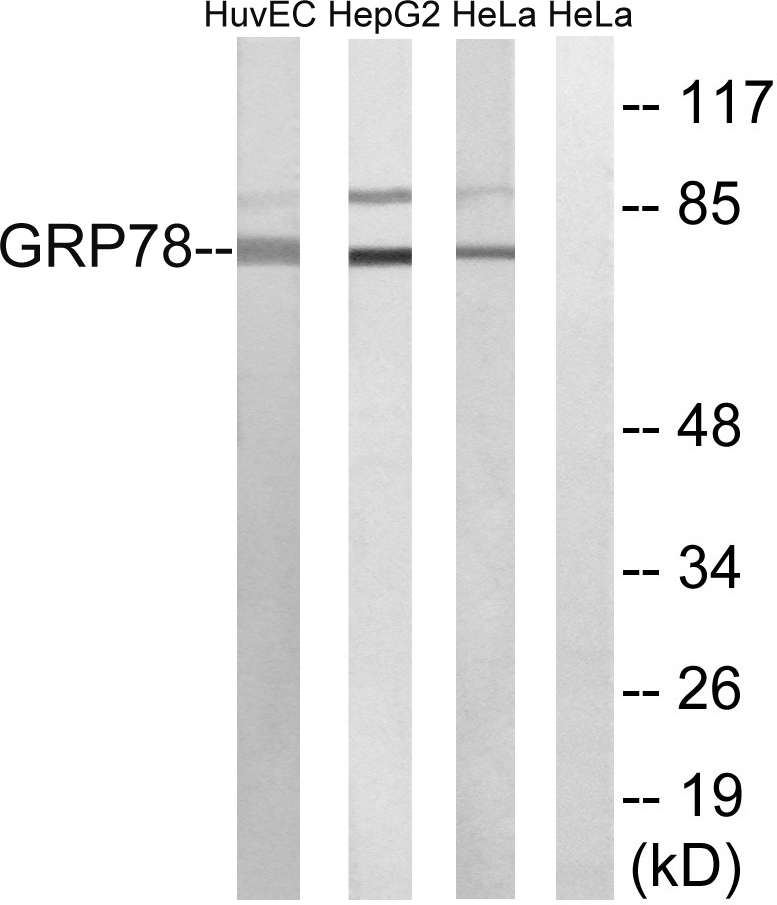Grp78 antibody
GTX127934
ApplicationsImmunoFluorescence, Western Blot, ImmunoCytoChemistry, ImmunoHistoChemistry, ImmunoHistoChemistry Paraffin
Product group Antibodies
TargetHspa5
Overview
- SupplierGeneTex
- Product NameGrp78 antibody
- Delivery Days Customer9
- Application Supplier NoteWB: 1:5000-1:20000. ICC/IF: 1:100-1:1000. IHC-P: 1:100-1:1000. *Optimal dilutions/concentrations should be determined by the researcher.Not tested in other applications.
- ApplicationsImmunoFluorescence, Western Blot, ImmunoCytoChemistry, ImmunoHistoChemistry, ImmunoHistoChemistry Paraffin
- CertificationResearch Use Only
- ClonalityPolyclonal
- Concentration0.14 mg/ml
- ConjugateUnconjugated
- Gene ID14828
- Target nameHspa5
- Target descriptionheat shock protein 5
- Target synonymsBip, D2Wsu141e, D2Wsu17e, Grp78, Hsce70, SEZ-7, Sez7, baffled, mBiP, endoplasmic reticulum chaperone BiP, 78 kDa glucose-regulated protein, GRP-78, HSP70 family protein 5, XAP-1 antigen, binding-immunoglobulin protein, glucose regulated protein, 78 kDa, heat shock 70 kDa protein 5, heat shock 70kD protein 5 (glucose-regulated protein, 78kD), heat shock protein 70 family protein 5, heat shock protein family A member 5, immunoglobulin heavy chain-binding protein
- HostRabbit
- IsotypeIgG
- Protein IDP20029
- Protein NameEndoplasmic reticulum chaperone BiP
- Scientific DescriptionProbably plays a role in facilitating the assembly of multimeric protein complexes inside the endoplasmic reticulum. Involved in the correct folding of proteins and degradation of misfolded proteins via its interaction with DNAJC10, probably to facilitate the release of DNAJC10 from its substrate.
- Storage Instruction-20°C or -80°C,2°C to 8°C
- UNSPSC12352203
References
- Fukui K, Okihiro S, Ohfuchi Y, et al. Proteomic study on neurite responses to oxidative stress: search for differentially expressed proteins in isolated neurites of N1E-115 cells. J Clin Biochem Nutr. 2019,64(1):36-44. doi: 10.3164/jcbn.18-31Read this paper
- Brzozowski JS, Bond DR, Jankowski H, et al. Extracellular vesicles with altered tetraspanin CD9 and CD151 levels confer increased prostate cell motility and invasion. Sci Rep. 2018,8(1):8822. doi: 10.1038/s41598-018-27180-zRead this paper



